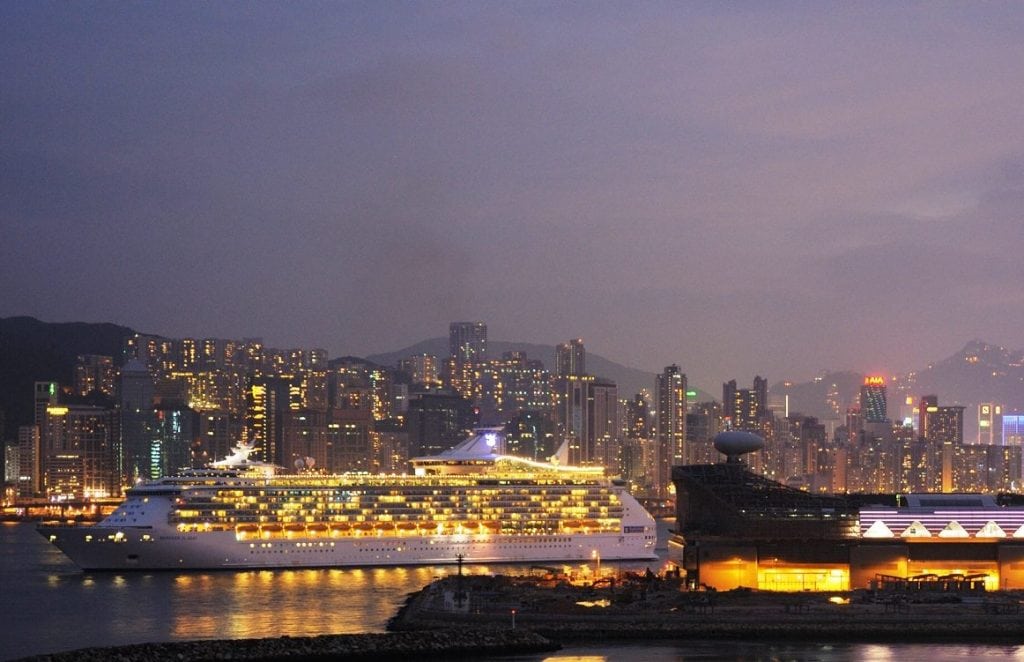The Cruise Industry Is Still Exploding in Asia But Prices Are Under Pressure

Skift Take
One of the biggest stories in the cruise industry over the past few years has been the rapid growth of cruising in Asia — and specifically China, where new ships are being deployed every year.
Cruise lines praised the high prices they were able to command for sailings in China as well as the opportunity that they saw in a growing middle class.
Last year, according to a study released Thursday by Cruise Lines International Association, the number of Chinese passengers grew 40 percent to 986,000. Throughout Asia, the total number of cruise passengers jumped 24 percent to nearly 2.1 million in 2015.
Capacity in Asia grew 51 percent this year; according to CLIA, overall capacity on ocean ships will reach 3.2 million throughout the region in 2016.
"While we expected Asia to experience record-breaking growth in cruise travel, we are astonished at the rate at which the region is emerging as one of the most significant cruise destinations and cruise source markets in the world,” Zinan Liu, chair of CLIA North Asia and the president of Royal Caribbean International's China and North Asia Pacific region, said in a statement.
But lately, executives have used more caution — tinged with optimism — when speaking about results in the region as the market grew more crowded. Ticket prices for China cruises fell for industry giants Carnival Corp. and Royal Caribbean Cruises in the second quarter.
Royal Caribbean said last week that yields, or revenue per berth per day, in China were worse than expected.
"In China, we’ve been growing at 40 and 50 percent growth rates without any difficulty; those are pretty extraordinary levels," Royal Caribbean Cruises CEO Richard Fain said during a second-quarter earnings call. "This year we as an industry have pushed those figures into triple digits. Even China has trouble growing at that pace. Fortunately, the softness in China is being driven mainly by this huge capacity growth rather than by faltering demand."
Carnival Corp. will increase its capacity in China 30 percent next year after a jump of 60 percent this year, though the company was careful to note during a June earnings call that the increases seemed large because they were building on small numbers.
“Overall, China remains a robust opportunity and we’re still at the very, very beginning of it,” president and CEO Arnold Donald told analysts.
Norwegian Cruise Line has been slower to move in China. The operator will send its first vessel, Norwegian Joy, to sail from Beijing and Shanghai next year.
Frank Del Rio, CEO of parent company Norwegian Cruise Line Holdings, said he was confident about entering the market "at a time where capacity increases have begun to moderate after years of rampant growth."
The cruise company this week lowered its projections for the rest of the year and 2017 over concerns about its largest markets. Terror attacks and political upheaval in Europe discouraged North Americans from taking Mediterranean cruises, and Norwegian overestimated how high a price its ships would command in the Caribbean.
In a call with analysts this week, Del Rio told analysts he expected that the company would benefit financially for years from the move into China.
"The advent of cruising in China gives the industry a third core market to allocate inventory, which did not even exist just 10 years ago," he said.
Already, Norwegian is considering sending a second new ship to the country in 2019, "if we see that there is room for another vessel there," Del Rio said.




